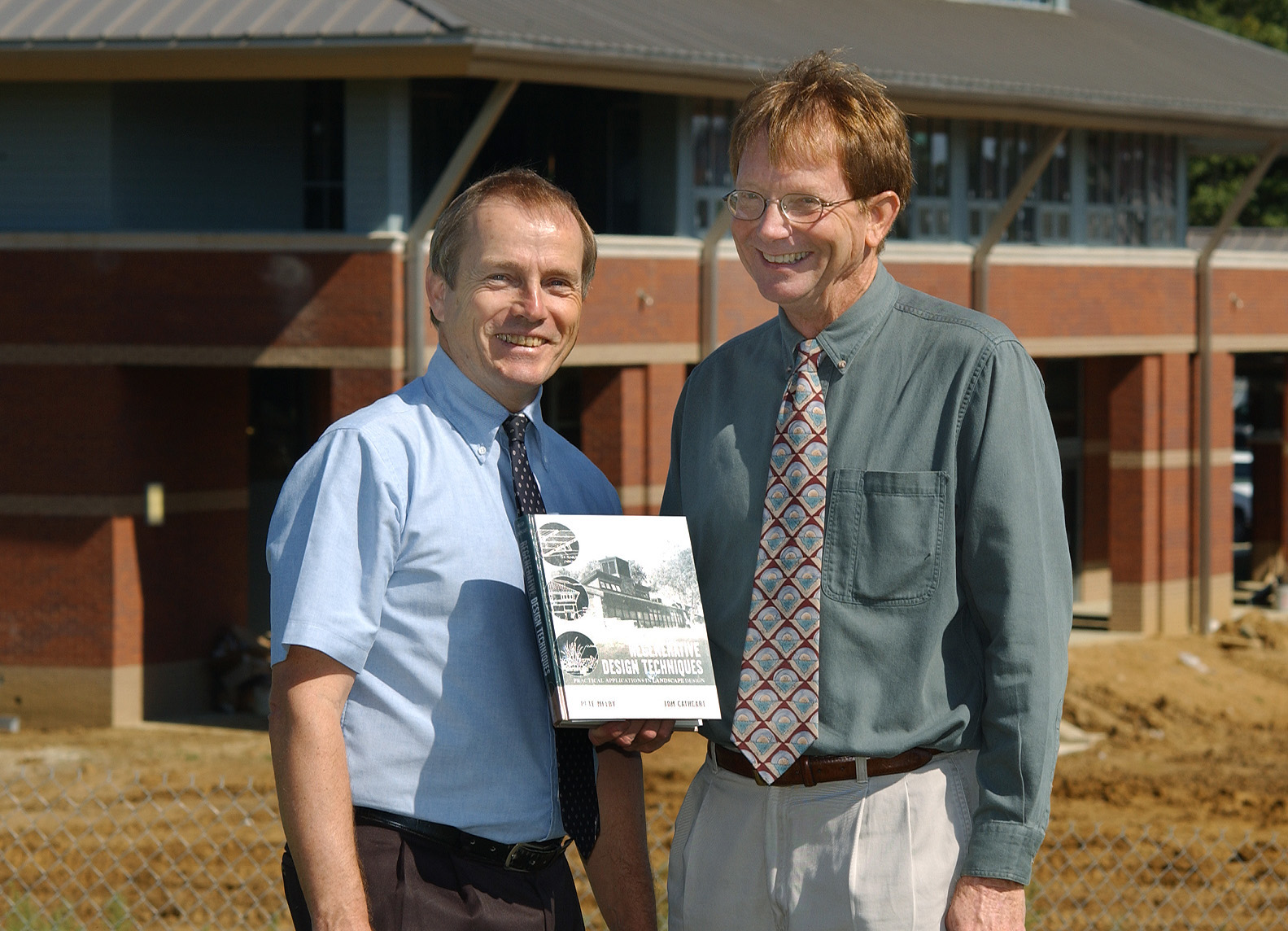Contact: Maridith Geuder

Tom Cathcart and Pete Melby
The color of a house, type of roofing material and location of trees are among simple residential design elements that can significantly affect energy consumption and protect rapidly vanishing natural resources.
With those ideas in mind, Mississippi State University biological engineer Tom Cathcart and landscape architect Pete Melby recently completed a book of practical solutions for blending human landscapes with natural ecological systems.
"Regenerative Design Techniques: Practical Applications in Landscape Design" is being released by John Wiley and Sons, an international publishing house based in Hoboken, N.J.
According to the authors, the 410-page guide provides practical and applied information on sustainable and regenerative principles, as well as techniques for analyzing and implementing the principles into the design of a structure or site.
"Sustainability uses nature as a model and there's no waste in nature," Cathcart said. "Our goal is to show that design techniques, many that are quite inexpensive, can continue to meet human needs without exhausting our natural resources."
The two professors, who co-direct MSU's Center for Sustainable Design, said the question of adopting sustainable practices shouldn't be "if" but "how soon."
As Melby observed: "Within 50 years, there will be between nine and 12 billion people living on our planet. We are seriously stressing some of the natural systems that we as biological creatures depend on for survival."
A warning sign, Cathcart observed, is the approximately 7,000 square miles of water in the Gulf of Mexico now considered a dead zone. "Nothing can live there as a result of human activity," he said.
Melby said, "We want readers to both understand ideas they can implement on a personal level and understand theories that can influence public policy decisions. As individuals and as a nation, we must consider the long-term costs of not adopting sustainable practices."
Their guide is among the first to focus on the "how" of putting regenerative technologies into practice. Complete with extensive illustrations--including several from Melby's Starkville residence--it offers real-world examples of workable practices.
Specific topics include water quality and harvesting, shelter design, overhangs and energy control, surface reflectivity, indoor air quality, energy conservation, using trees for sun and wind control, waste processing and recycling, and landscape management.
Whether a private home or large commercial building, the devotion of thought and creativity to landscape design planning is essential, Cathcart said. "For example, orienting a building to take advantage of natural heating and cooling capabilities can save 33 percent on energy bills," he added.
Other simple and sustainable steps they recommend include the:
--Choice of highly reflective materials for roofing and light colors for house paint to reflect heat and conserve energy;
--Composting of kitchen waste and natural yard debris to help reduce landfill content and provide an endless and cost-free source of yard fertilizer; and
--Planting of trees on the east and west side of a home to block summer sun, and evergreens added on the north side to deflect winter winds.
For more on the book, see http://www.wiley.com/cda/product/0,,0471414727,00.html.